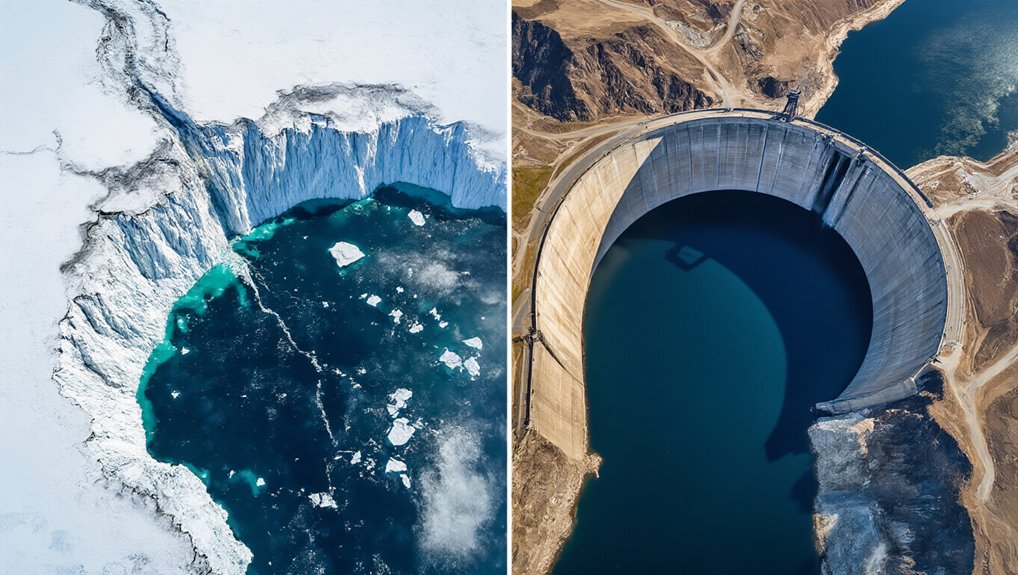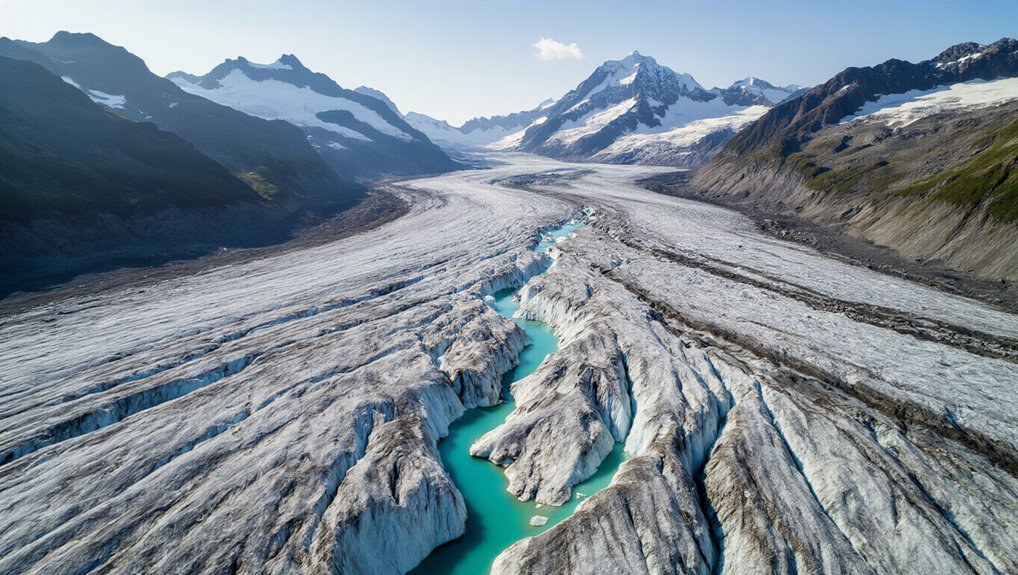While most people go about their daily lives oblivious to Earth’s magnetic drama, our planet’s north pole has been on a bizarre road trip. Once comfortably settled in Canada, the magnetic north pole has been racing toward Russia at speeds that would make Olympic sprinters jealous. It accelerated from a leisurely 6 miles per year to a whopping 31 miles annually in the 2000s, though it’s recently slowed to a more reasonable 22 miles yearly. Scientists aren’t exactly throwing a goodbye party for Canada just yet.
Earth’s magnetic north pole is abandoning Canada for Russia, sprinting across the Arctic at speeds that defy scientific expectations.
This pole-vaulting adventure has nothing to do with the geographic North Pole, which stays put like that one friend who refuses to leave after a party ends. The magnetic wandering is caused by fluid dynamics in Earth’s outer core—basically, our planet’s insides are as unsettled as a teenager’s mood swings. Navigation systems that rely on magnetic orientation are having an existential crisis because of this.
Let’s be clear: this isn’t the same as the doomsday “cataclysmic pole shift” that conspiracy theorists love to rant about. That theory—championed by Charles Hapgood and briefly entertained by Einstein—suggests Earth’s crust could suddenly slip like a loose toupee. Nice theory, but geologists collectively roll their eyes at it. The evidence just isn’t there.
What we do know is that Earth’s magnetic field has been weakening for 3,000 years. For a full reversal, it needs to decay by about 90%—a process that takes thousands of years. The last complete flip happened roughly 772,000 years ago, though we’ve had about 15 near-misses since then.
The Laschamps Excursion 42,000 years ago was one such dramatic event. When the magnetic field weakens, Earth gets cosmic-ray-bombed, affecting everything from atmospheric chemistry to radiation levels at the surface. Ancient kauri trees from New Zealand recorded these changes, linking them to significant global environmental shifts. Satellites already experience electronic malfunctions when passing through the South Atlantic Anomaly, a region where the magnetic field is notably weaker.
Our magnetic pole might be on an extended vacation, but there’s no need to pack your apocalypse kit. Yet. The latest World Magnetic Model was released in December 2024 to help keep our navigation systems accurate despite the pole’s unpredictable journey.
References
- https://projects.research-and-innovation.ec.europa.eu/en/horizon-magazine/earths-magnetic-poles-could-start-flip-what-happens-then
- https://www.smithsonianmag.com/smart-news/earths-magnetic-north-pole-is-shifting-toward-siberia-and-raising-questions-about-unusual-movement-180985892/
- https://en.wikipedia.org/wiki/Cataclysmic_pole_shift_hypothesis
- https://www.unsw.edu.au/newsroom/news/2021/02/earth-s-magnetic-field-broke-down-42-000-years-ago-and-caused-ma
- https://science.nasa.gov/science-research/earth-science/flip-flop-why-variations-in-earths-magnetic-field-arent-causing-todays-climate-change/









